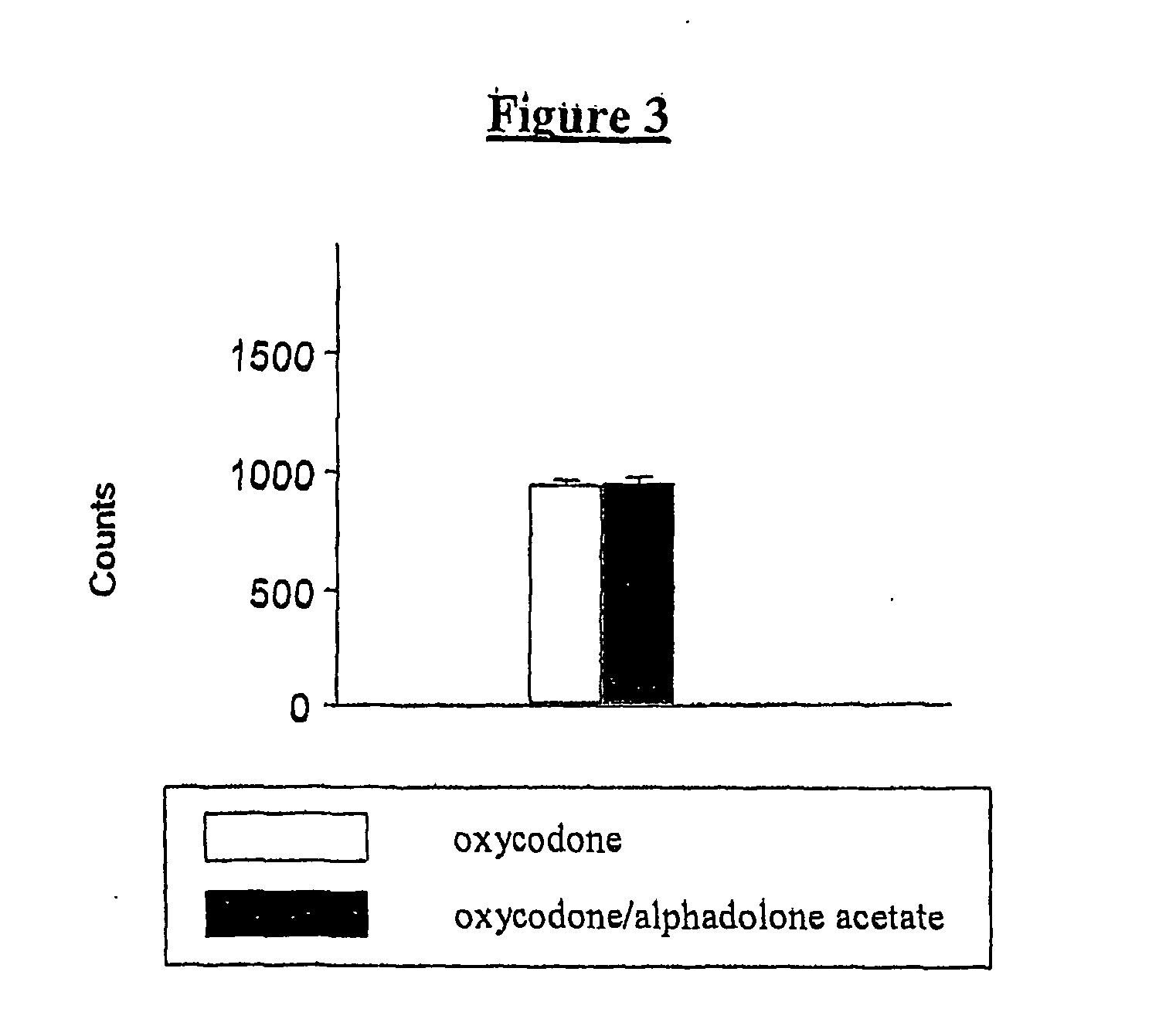Use of pregnane-diones or diols as neuropathic analgesic agents
a technology of neuropathic pain and diol, which is applied in the field of inducing analgesia in response to neuropathic pain, can solve the problems of unrelenting chronic pain, reduced effectiveness of neuropathic pain treatment agents useful in the treatment of inflammatory and other pains, and unrelenting chronic pain
- Summary
- Abstract
- Description
- Claims
- Application Information
AI Technical Summary
Benefits of technology
Problems solved by technology
Method used
Image
Examples
example 1
Animal Models of Neuropathic Pain—Experimental Approach
There are no human experimental neuropathic pain models. There are several animal models that differ in the method of induction of pain and in the relative balance of signs and symptoms. Thus researchers, in attempting to identify a useful pharmacotherapy, will use a battery of these models.
The majority of neuropathic pain models in current use share as a common feature alterations in hind-limb cutaneous sensory thresholds following partial injury of a peripheral (usually sciatic) nerve. In particular, demonstration of hyperalgesia to noxious thermal stimuli and allodynia to cold and mechanical stimuli are used as outcome measures. Two of the most commonly used models are the chronic constriction injury (CCI) of sciatic nerve,7 and the spinal nerve ligation model (SNL)6. The CCI model consists of the loose ligation of the sciatic nerve at mid-thigh level with chromic gut sutures7. An inflammatory reaction develops in respon...
example 2
Model for Neuropathic Pain
Courteix and co-workers have developed a diabetes-induced model for neuropathic pain.
They found that induction of experimental insulin-dependent diabetes mellitus in rats caused allodynia and hyperalgesia10. They went on to show that intravenous morphine induced a dose-dependent anti-nociceptive effect at doses twice as high as those in normal rats using the mechanical nociceptive paw pressure test10. Thus the diabetic model reproduced the experience of diabetic neuropathic pain in humans; it is opioid resistant. The experiments reported here use this model to assess the relative efficacy of alphadolone acetate and three opioids, fentanyl, morphine and oxycodone given alone and in combinations in causing anti-nociception assessed with paw pressure measured using the Randall Sellito method.
Methods:
Male Wistar rats (wt 65-80 g) were used for these experiments. Animals were housed 5 per cage under standard laboratory conditions. Food and water were pr...
PUM
| Property | Measurement | Unit |
|---|---|---|
| Time | aaaaa | aaaaa |
| Conformation | aaaaa | aaaaa |
Abstract
Description
Claims
Application Information
 Login to View More
Login to View More - R&D
- Intellectual Property
- Life Sciences
- Materials
- Tech Scout
- Unparalleled Data Quality
- Higher Quality Content
- 60% Fewer Hallucinations
Browse by: Latest US Patents, China's latest patents, Technical Efficacy Thesaurus, Application Domain, Technology Topic, Popular Technical Reports.
© 2025 PatSnap. All rights reserved.Legal|Privacy policy|Modern Slavery Act Transparency Statement|Sitemap|About US| Contact US: help@patsnap.com



